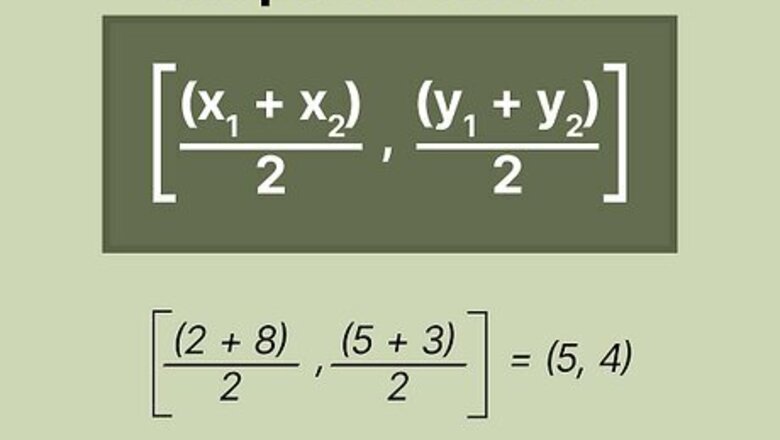
views
Gathering Information
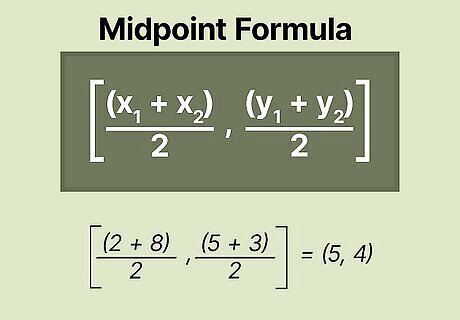
Find the midpoint of the two points. To find the midpoint of two points, simply plug them into the midpoint formula: [(x1 + x2)/2,( y1 + y2)/2]. This means that you're just finding the average of the x and y coordinates of the two sets of points, which leads you to the midpoint of the two coordinates. Let's say we're working with the (x1, y1) coordinates of (2, 5) and the (x2, y2) coordinates of (8, 3). Here's how you find the midpoint for those two points: [(2+8)/2, (5 +3)/2] = (10/2, 8/2) = (5, 4) The coordinates of the midpoint of (2, 5) and (8, 3) are (5, 4).
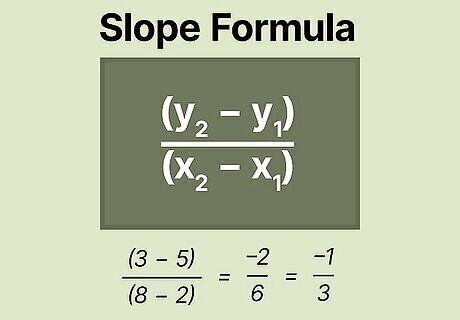
Find the slope of the two points. To find the slope of the two points, simply plug the points into the slope formula: (y2 - y1) / (x2 - x1). The slope of a line measures the distance of its vertical change over the distance of its horizontal change. Here's how to find the slope of the line that goes through the points (2, 5) and (8, 3): (3-5)/(8-2) = -2/6 = -1/3 The slope of the line is -1/3. To find this slope, you have to reduce 2/6 to its lowest terms, 1/3, since both 2 and 6 are evenly divisible by 2.
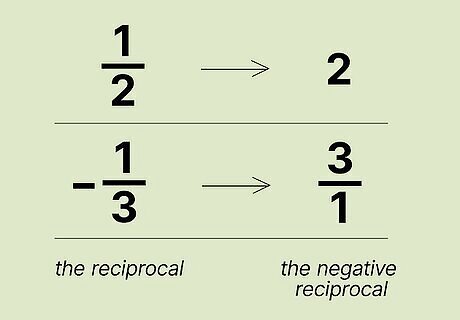
Find the negative reciprocal of the slope of the two points. To find the negative reciprocal of a slope, simply take the reciprocal of the slope and change the sign. You can take the negative reciprocal of a number simply by flipping the x and y coordinates and changing the sign. The normal reciprocal of 1/2 would be 2/1 and the negative reciprocal is -2/1, or just -2; the reciprocal of -4 is 1/4. The negative reciprocal of -1/3 is 3 because 3/1 is the reciprocal of 1/3 and the sign has been changed from negative to positive.
Calculating the Equation of the Line
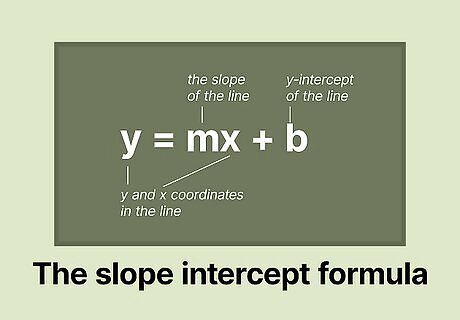
Write the equation of a line in slope-intercept form. The equation of a line in slope-intercept form is y = mx + b where any x and y coordinates in the line are represented by the "x" and "y," the "m" represents the slope of the line, and the "b" represents the y-intercept of the line. The y-intercept is where the line intersects the y-axis. Once you write down this equation, you can begin to find the equation of the perpendicular bisector of the two points.
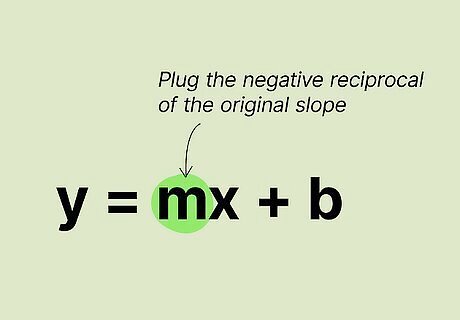
Plug the negative reciprocal of the original slope into the equation. The negative reciprocal of the slope of the points (2, 5) and (8, 3) was 3. The "m" in the equation represents the slope, so plug the 3 into the "m" in the equation of y = mx + b. 3 --> y = mx + b = y = 3x + b
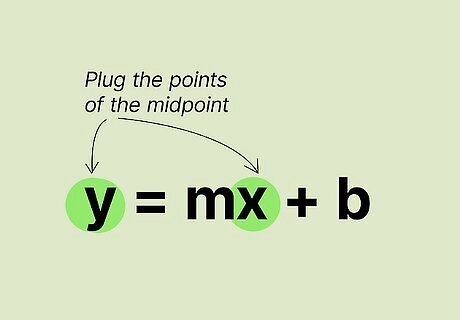
Plug the points of the midpoint into the line. You already know that the midpoint of the points (2, 5) and (8, 3) is (5, 4). Since the perpendicular bisector runs through the midpoint of the two lines, you can plug the coordinates of the midpoint into the equation of the line. Simply plug in (5, 4) into the x and y coordinates of the line. (5, 4) ---> y = 3x + b = 4 = 3(5) + b = 4 = 15 + b
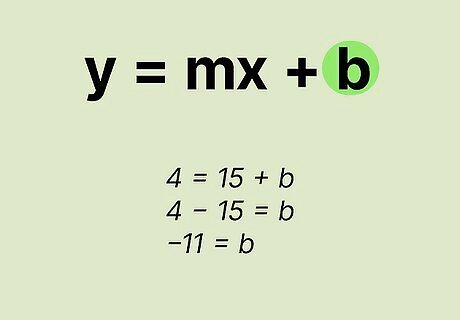
Solve for the intercept. You have found three of the four variables in the equation of the line. Now you have enough information to solve for the remaining variable, "b," which is the y-intercept of this line. Simply isolate the variable "b" to find its value. Just subtract 15 from both sides of the equation. 4 = 15 + b = -11 = b b = -11
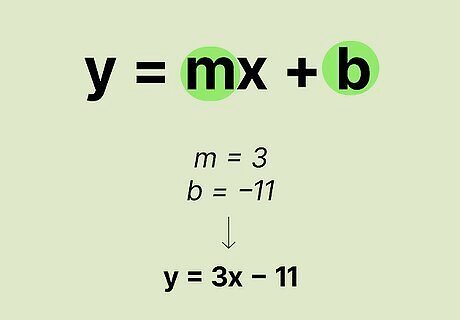
Write the equation of the perpendicular bisector. To write the equation of the perpendicular bisector, you simply have to plug in the slope of the line (3) and the y-intercept (-11) into the equation of a line in slope-intercept form. You should not plug in any terms into the x and y coordinates, because this equation will allow you to find any coordinate on the line by plugging in either any x or any y coordinate. y = mx + b y = 3x - 11 The equation for the perpendicular bisector of the points (2, 5) and (8, 3) is y = 3x - 11.


















Comments
0 comment